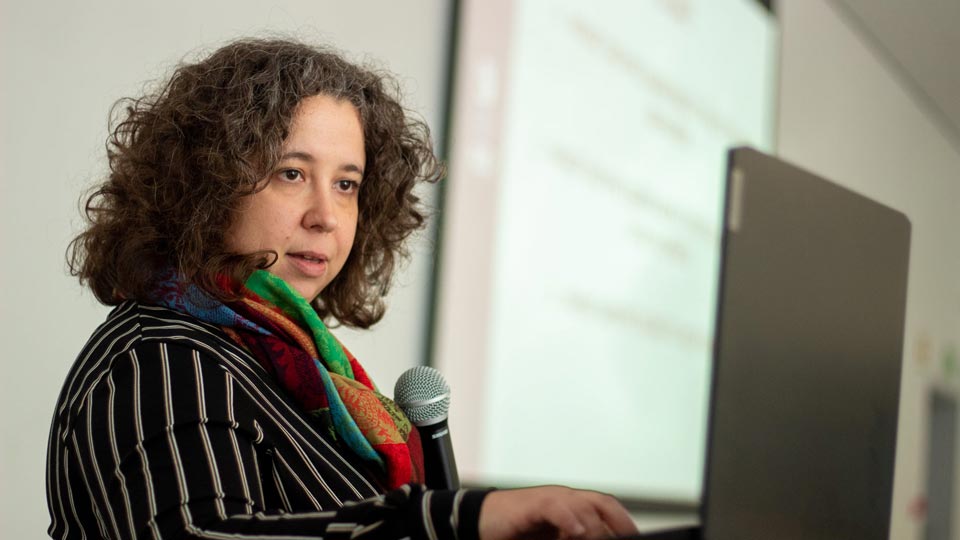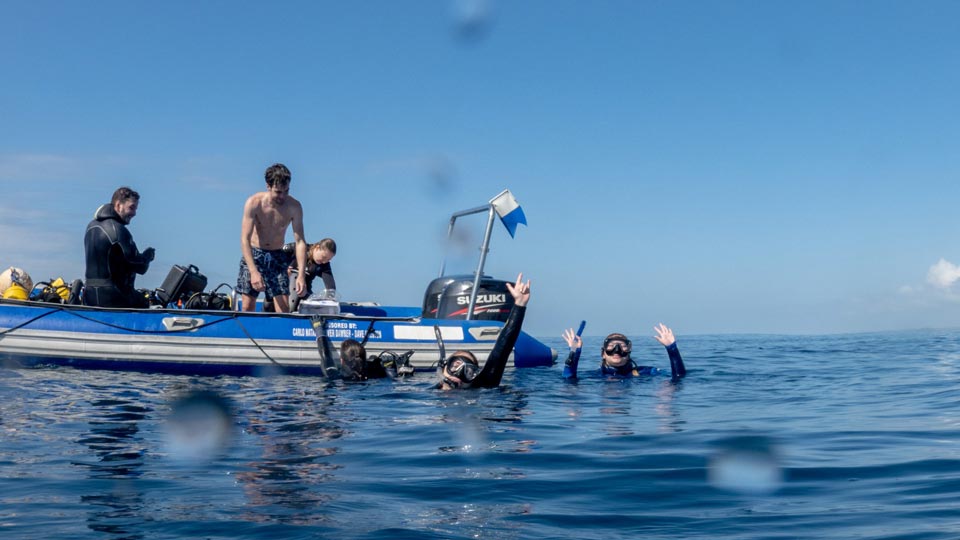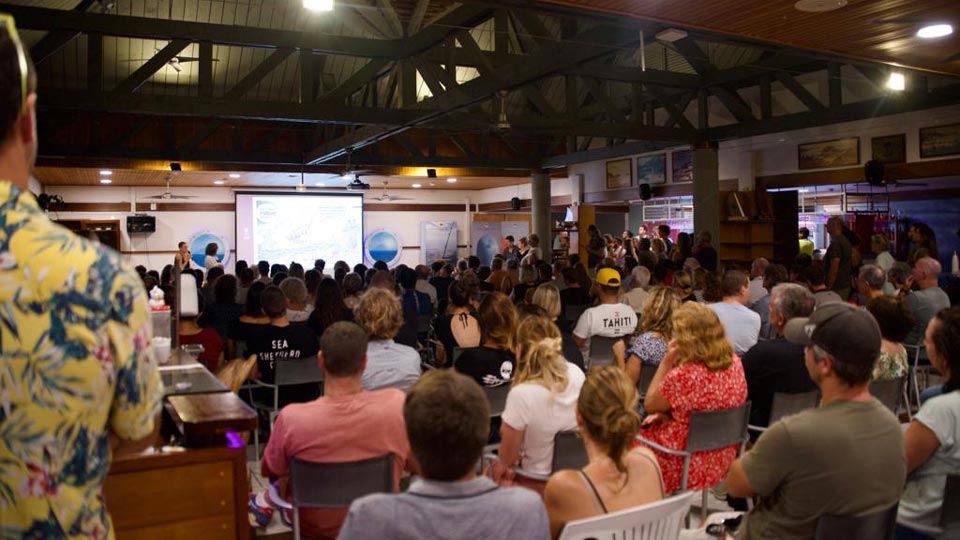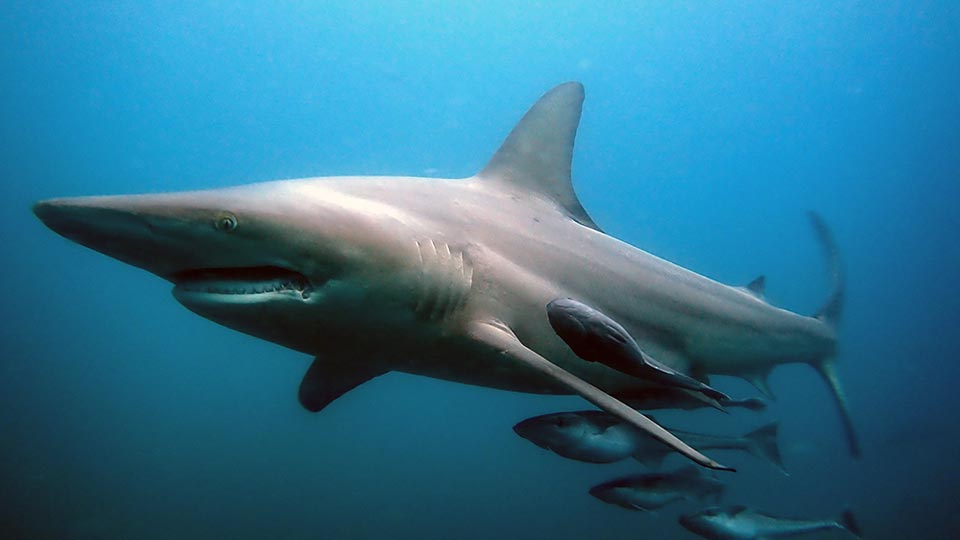A great deal has happened with the evolution of Dr Sara Andreotti’s SharkSafe Barrier project and shark conservation work since her last blogpost – the hot-button issue of shark attacks and the safety of South Africa’s beaches – and her latest Shark Notes will fill us in on the extraordinary amount of activity. Much of what Dr Andreotti and her team achieve is thanks to the funds raised through our Italtile foundation, as well as the SharkWise Project: the collab between the SharkSafe Barrier project, Italtile, ITD who import our beautiful Tivoli taps, and you, our Italstylistas, who help us donate R2 to the fund every time you purchase a Tivoli tap.
Applause to you! Firstly, for your good taste in choosing beautiful taps, and secondly,
for playing your part in a project that is achieving great things and laying the foundations for a regenerative future.

Today’s Shark Notes focus on research, progress in shark conservation and, in particular, what happened since we created the SharkWise Project and what Dr Andreotti and her research team have been able to tackle, with the funds raised by Italtile, thanks to your support. Once again, you’ll find her feedback fascinating and informative.
#5 – Of local Blacktips, White Sharks, Internships, New Caledonia and Justice 4 Jaws
Genetic Project on Blacktip Sharks
The team has completed the collection of genetic samples from Blacktip Sharks in Umkomaas, Durban. The Blacktips are very friendly and they are regular visitors to the Aliwal Shoal Marine Protected area. Local scuba diving centres bring tourists to the area to give them the opportunity to photograph these elegant animals up close. Walter Bernardis, from African Watersport, is our field work partner, and he has also used this opportunity to remove fish hooks from the sharks’ mouths, by bringing the sharks to a state of tonic immobility. (Tonic immobility? This is a sort of hypnotic state – a reflex that causes a temporary state of inactivity in animals like sharks and rays. Sharks slide into a trance when upside down.) Thanks to the funds provided by Italtile and Tivoli tap we bought and modified a spear gun to collect skin tissue from the sharks as we area diving with them. We store the samples in ethanol on the boat. Once back on land, MSc student Tyler Stenning and PhD student Simran Rupra study the DNA of this species. The equipment for the extraction and purification of the DNA was also bought thanks to Italtile and Tivoli Tap support.
Photo Identification of White Sharks
When I was working on my PhD, I started collaborating with Dr Pieter Holtzhausen to develop a user-friendly photographic identification software to assist matching white shark dorsal fin photographs and to build a national and international database, which will allow us to keep track of white sharks’ population number. The software has been built and in the last few years it has been used in Gansbaai by Mary Rowlinson and the Shark and Marine Research Institute. Megan Maroen has been working with this software since last year, and she soon realised she needed a faster, more powerful laptop, which we could buy thanks to the sponsorship provided by Italtile and Tivoli Taps. We are also improving the software by covering the additional, much-needed coding costs.
See a video about the Identifin software here: https://www.youtube.com/watch?v=654yIbWijJI
The launch of the SharkWise Marine Internship Programme.
With all the research projects currently running I found myself in the dire need of more able hands on deck. At the same time, I’ve been receiving requests from young, passionate people interested in shark research and conservation. To solve both needs at once, Walter Bernardis and I launched The SharkWise Project - Marine Internship.

This is a fully research-oriented internship program based in Umkomaas, South Africa, established to assist with the data collection of current MSc and PhD projects, analysing data using specialised software. Interns will also have the opportunity to network with like-minded local and international specialists.
We hired Hannah Snyman – a qualified marine biologist – to run the programme and ensure all the data are organised correctly and the equipment is well looked after. She is doing an incredible job! If you would like to stay connected to the work of the SharkWise Students and Interns, you can like and follow the brand new Facebook page at this address: https://www.facebook.com/The-SharkWise-Project-105346392151183
New Caledonia and the SharkSafe Barrier.
Although not part of the SharkWise Project – but rather funded by the SharkSafe Barrier Company –the SW Project is nevertheless such an integral part of our SharkSafe Barrier outreach work, that I think it is worth mentioning the good progress happening on this side too.
I went to New Caledonia in April, to investigate more closely the need for effective and humane shark barriers in Baie de Citron. I was blown away by the welcome I received on the island. I was able to learn from the locals about their recent conflict and relationship with sharks; I was able to personally investigate the area where an installation is needed, and also had the opportunity to give a conservation talk on shark behaviour at the Circle Nautique organized by Nina Polo. Gratifyingly , about 300 people attended!
In my time on the island I was also able to secure two partners to participate in the public tender: SQUALE (http://www.squale.nc/) and ABC Dive and Clean, who share the eco-oriented minds and hearts of the SharkSafe Barrier team. Preparing this tender (in French!) with them felt as if we have been working together for years, and we met the deadline for submission.
What a great adventure it was – travelling from Cape Town, through Dubai and Sydney, to reach this remote island in the Pacific Ocean. The humidity on the island was something I have never experienced before. Apparently I was there in the middle of the rain season! (As it happened, the air felt less humid when it rained. Go figure!) It is a long, very green island, dotted with lagoons and surrounded by coral reefs and tiny atolls. I was fortunate enough to have some needed R&R: one day spent diving in 26 degree water, getting up close and personal with an incredible, vast coral reef, and being enthralled by turtles at the various cleaning stations. An unforgettable privilege.
The Talk at the Two Oceans Aquarium with Justice 4 Jaws.
During the past weekend, the Justice 4 Jaws invited me to present at the ‘Living in Harmony with Sharks is Possible’ workshop at Two Oceans Aquarium in Cape Town.
In partnership with WILDOCEANS and Shark Attack, Justice 4 Jaws hosted presentations and discussions around what shark behaviour to look out for in the water, what to avoid when swimming and how to manage an approaching shark in water, as well as the development of the SharkSafe Barrier technology.

Dr Sara Andreotti and her team, together with like-minded specialists around the world, (along with the support of interested people like our Italstylistas) continue to search for ways to create crucial balance in the oceans and find the optimum harmony between man and shark. With their tireless work, perhaps that much-needed harmony and balance will be achieved sooner than we think!











































Validate your login